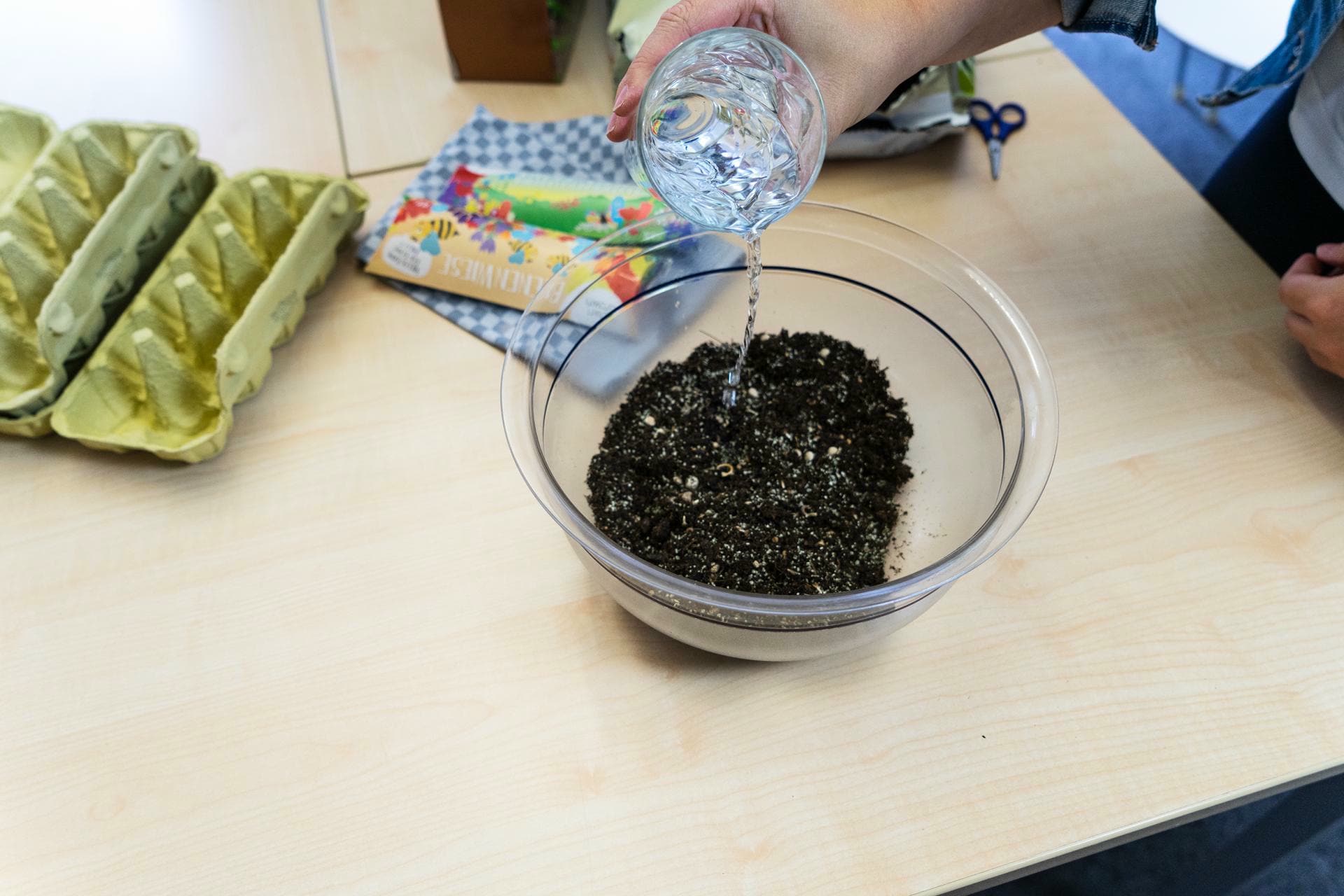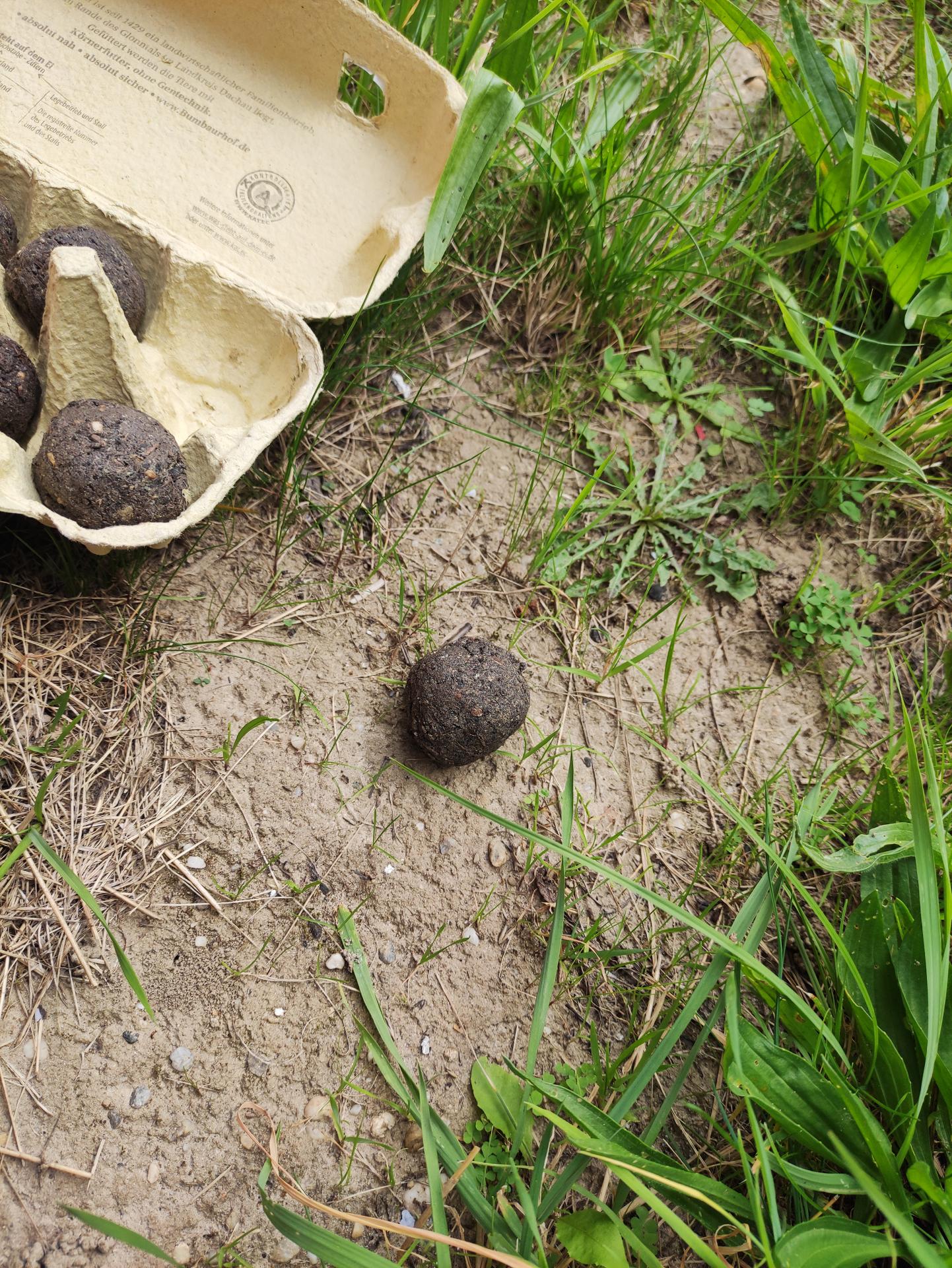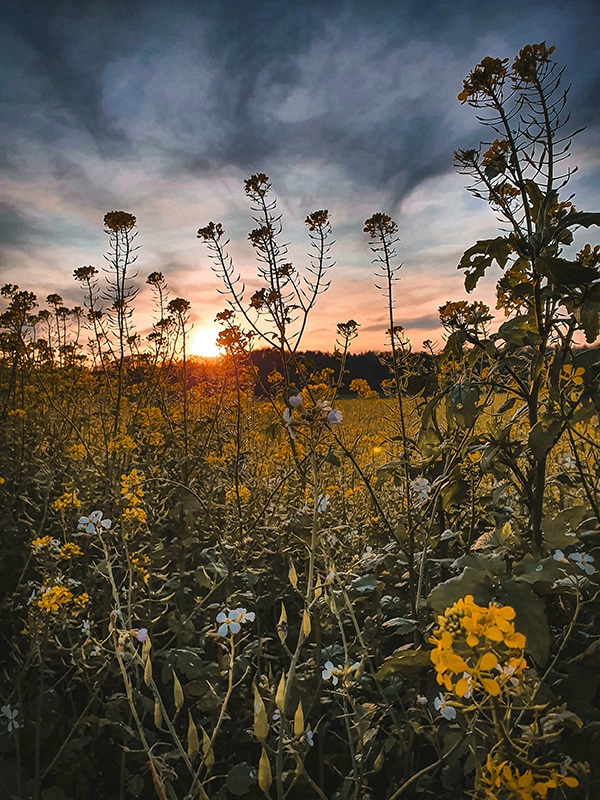When the trees outside turn green again, the first flower buds blossom and it starts to chirp and hum again, then spring is finally here again. Unfortunately, however, it is precisely these beautiful humming sounds that are now under enormous threat. According to the United Nations World Biodiversity Council, around one million species are now acutely threatened with extinction - including numerous insect species. The protection of biodiversity is therefore playing an increasingly important role. A major task for society. However, everyone can do small things to help create habitats for insects and other species. We have put together a few useful tips and tricks for you.
PREFERABLY ORGANIC FOOD
WATCH YOUR DIET
Buying organic products for biodiversity? Exactly! As simple as it sounds, it is a very effective tool to do something for biodiversity and the preservation of our soils. Organic farming is characterised above all by more careful cultivation, fewer pesticides, more fallow land and the preservation of natural cycles. As a result, significantly more species can be found on organically farmed land than on comparable conventional land. In addition, healthy soils store CO2. It is therefore also a contribution to more climate protection.
Of course, organic products are somewhat more expensive. But the price is usually justified. The price difference is often not that great, especially for fruit and vegetables. The price of meat is of course significantly higher. But maybe you can reduce your consumption a little, then you'll have enough money for the organic variety.
In general, the following applies when shopping: The more often organic, the more regional and the higher the standard (e.g. Demeter, Bioland, Naturland etc.), the better for biodiversity.
WATER, WATER, WATER
COOL WET FOR TREES AND ANIMALS
Especially on hot summer days, it is important to drink a lot. This applies not only to humans, but also to many animals. If nature has dried out due to the hot days, you can provide a little refreshment. Simply put out a bowl of water for bees, wasps or birds. Important: Make sure to attach a twig to the edge of the bowl, for example, so that the insects can reach the water easily and don't drown. Glass marbles can also be a good option.
However, it is not only the animal world that thirsts for water on hot days, but also the plant world. For example, trees along the roads in cities may not get enough water and slowly dry out. If you spot a tree that is already shedding dry leaves in early summer, why not grab a water bottle, a watering can or a large bucket and give it a little rest by watering it. It will thank you in autumn with colourful leaves.
CREATE A HOME
BUILDING DWELLINGS FOR INSECTS AND SMALL ANIMALS
As there are fewer and fewer areas that are untouched by humans, many insects and other animals lack nesting and sheltering places. But you can also remedy this situation with a few simple steps. For example, if you have a garden, it is best not to clear away all the leaves, but to leave several piles. Hedgehogs and many other insects feel very much at home there. Old wood or tree stumps also provide a wonderful home for insects of all kinds. But even those who don't have a large garden can create living space for insects. Namely with small insect hotels. You can easily build these yourself.
1. Materials
In order for your insect hotel to become a real home, it is important to use the right material. There are now numerous insect hotels on sale in DIY stores and discounters. Unfortunately, these are often filled with straw, spruce cones, wood shavings, wood chips and similar cheap fillers and are therefore largely useless as a hiding place or nursery for insects. So make sure you use the right materials. Well-dried hardwoods (oak, ash, beech, fruitwood), hollow reed or bamboo stalks, special baked clay bricks, cardboard tubes or bee boards are very suitable.
2. Building the insect hotel
Once you have gathered the right materials, it's time to start building. It is best to start by building a basic structure out of wood. This should look like an open-fronted box with different sections. Then you can build the various dwellings. It is best to stack the bamboo or cardboard tubes carefully. Make sure they are intact and neatly cut. If you want to integrate a large piece of wood into which you drill holes, make sure that you do not leave any splinters or other impurities in the holes. The wild bees will injure their wings on these. Holes in wood should always be drilled lengthways - i.e. from the bark side - to avoid cracks and the swelling of sapwood in the brood tunnels. The holes must be absolutely clean and very carefully smoothed. They should have a diameter of between 2 and 8 mm. The wider the range of drill holes, the greater the chances of finding residents.
Important to know: Insect hotels of this kind only provide a place for around 30 of the more than 550 species in Germany to breed. Almost three quarters of all nest-building wild bees nest in sandy soil. With open sand patches or a small "sandbox" in the garden, you can also help these species in a simple way.
3. Installing and maintaining the hotel
Once you have finished building the insect hotel, it is best to place it in a sheltered spot. Of course, a place with a roof is particularly suitable here. It should also be firmly attached so that it does not sway in the wind. It should be orientated in a south-east to south-west direction so that it always has enough sun. Of course, it is also important to check on the insect hotel from time to time. The insects will clean the used passages themselves if necessary, but of course it doesn't hurt to replace fallen stalks, remove spider webs or replace the pieces of wood with holes after a few years to prevent fungal infestation. It also helps, of course, if wild flowers are planted near the insect hotel so that the insects have sufficient food.
CREATE LIVING SPACE
MAKE YOUR OWN SEED BOMBS
Everyone can help to create a wild flower meadow so that insects have sufficient habitat. With Seedbombs, you can also create a colourful flower meadow at home or in dull outdoor areas! They have everything you need for the seeds they contain to bloom even in a small patch of soil without much gardening knowledge. The flowers that grow from them are a great source of food for bees, butterflies and insects.
PROTECT HABITAT
SUPPORT LOCAL INITIATIVES OR BECOME A WILD BEE SPONSOR
Bees are black and yellow striped, that's obvious. Really? That's only partly true, because when we talk about bees, we're usually talking about honey bees. However, there are also a large number of wild bee species. They are insects and play an important role in nature: they pollinate numerous plant species and thus ensure that we can enjoy fruit and vegetables.
Nevertheless, more than half of the approximately 550 species in Germany are considered endangered. Currently, 52.2 % are included in the Red List of bees in Germany. This development is not only alarming for wild bees, it also affects the economy. Around 84% of the most important crops for our food supply are pollinated by insects. Wild and honey bees therefore make a significant contribution to securing our food supply.
The causes of the general decline and the endangerment of wild bees lie on the one hand in the destruction of their nesting sites and on the other hand in the destruction or reduction of their food supply. Another cause of the decline is the loss of land due to building development and sealing. But "tidy" public green spaces and private gardens that are mowed too often and the use of pesticides several times a year also have a negative impact.
The initiative "Germany is buzzing! We're doing something for bees" initiative is therefore committed to increasing the number of bees in cities, municipalities and districts. Anyone can help, regardless of whether or not they have had anything to do with nature or bee conservation. The campaign protects wild bees and other insect species and shows how important it is to show consideration for the animals' habitat. The motto is: everyone can, everyone can. Why don't you see if there is an initiative in your community? Help is always welcome!
You can also sponsor wild bees by making a donation to the Foundation for People and the Environment. This support enables the initiative to promote bee conservation by planting natural gardens. Click here to become a sponsor: https://www.wildbienenpaten.de/












































